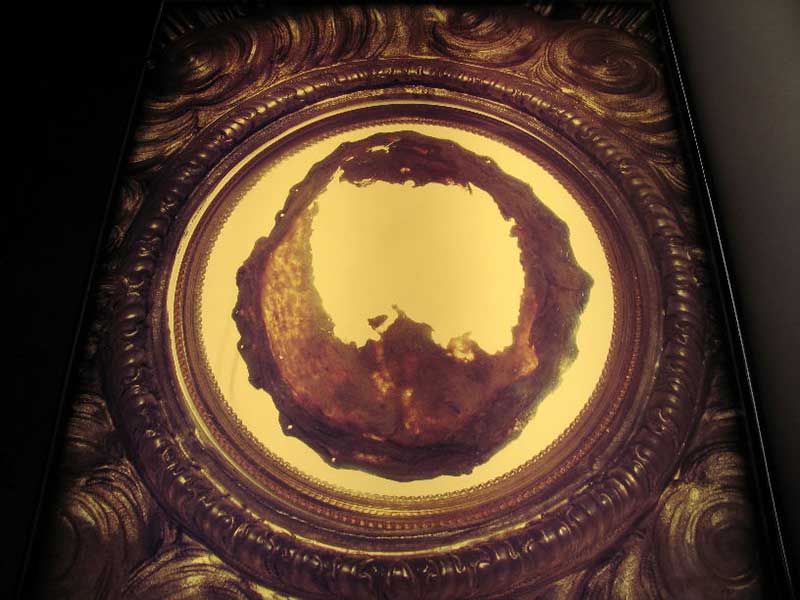we don't believe popes are always correct as they too are human ...but are infaliable in desicion when they speak ex-cathedra
After scientific investigation, a eucharistic miracle in Poland was
recently confirmed as authentic by the local bishop of the area. Initially, the Host had fallen on the ground, so it was placed in water, as is customarily done in such cases. Not long afterward, the Eucharist began turning red, as if bloody.
Tests subsequently done on the subject indicated it came from human tissue "most similar to the heart muscle ... as it appears under the strains of agony."
The case is similar to one that occurred in Buenos Aires, Argentina years ago. In 1996, when then-Bishop Jorge Bergoglio (now Pope Francis) was an auxiliary bishop there under Cdl. Antonio Quarracino. A consecrated Host was found on the ground and soon placed in a glass of water to dissolve. Days later, the Eucharist wasn't dissolved at all — it had turned into bloody Flesh.
Cardinal Quarracino and Bp. Bergoglio took a photograph of the bloody Host for the record, then stored it in a tabernacle to decompose. In 1999, three years later, that same bloody Flesh remained. That's when Dr. Ricardo Castañón, a Bolivian neurophysiologist, was called in to have samples from the Host examined in a laboratory environment.
Doctor Castañón took it to the San Francisco Forensic Institute without telling anyone there what it was or where it came from. After testing, he was told the samples constituted heart muscle, specifically from the myocardium of the left ventricle. Further, the tests showed the blood was human, with human DNA, and of the rare AB-positive type — the same as found on the Shroud of Turin.
Following those results, the Host was taken to Dr. Frederick Zugibe, an esteemed cardiologist and forensic pathologist at Columbia University in New York. According to Dr. Castañón, Dr. Zugibe tested the samples he was given and said the person whose heart it came from must have been tortured. Further, Dr. Zugibe was reportedly amazed that when he studied the samples, they were pulsating like a living, beating heart.
When Dr. Castañón first came across the miracle in 1999, he was an atheist. Today, he's a Catholic.
After that, the results of the tests were
compared to samples from another eucharistic miracle that took place in Lanciano, Italy roughly 1,300 years ago. The Body and Blood from that miracle are still preserved at a church in the town. In 1970, they were examined scientifically and, like the Buenos Aires sample, found to be from a human heart with AB-positive blood.
The miracle of Lanciano on display
The comparison indicated that the samples from both Buenos Aires and Lanciano must have come from the same man. They both had the exact same DNA.
Church leaders are always careful to test potential miracles and rule out natural causes. Last year, in Utah, a Host that had been dropped and kept in water appeared blood red after days. However, after a thorough investigation, the red substance
turned out not to be blood but rather mold. So the Church isn't quick to label every case like this miraculous. But sometimes, after healthy skepticism and cautious investigation, there's no other conclusion that can be drawn.

